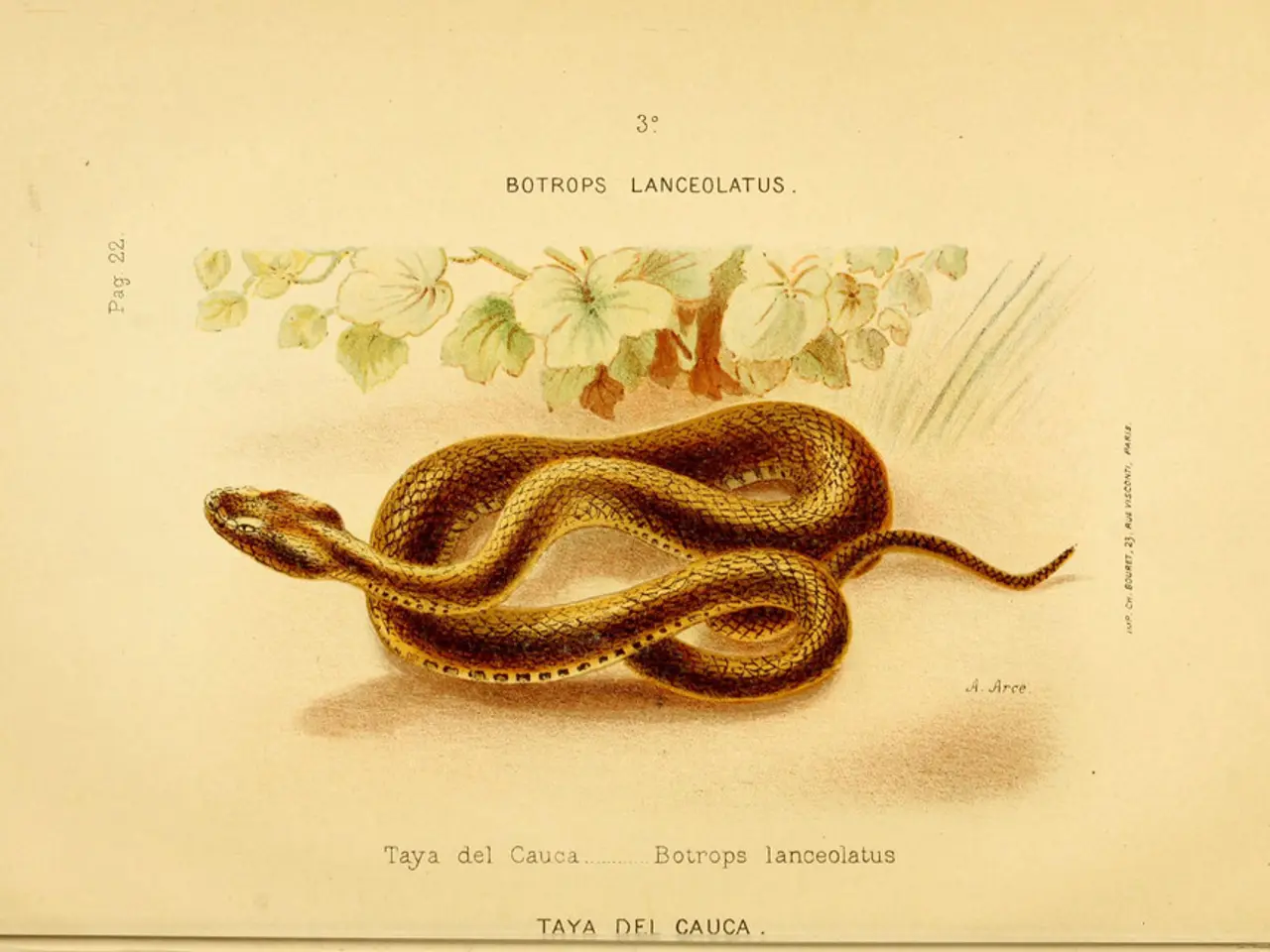Massive 47-million-year-old serpent uncovered in India, setting a new record for colossal ancient reptiles
In the heart of India's Kutch region, a remarkable discovery has been unearthed at the Panandhro Lignite Mine. The fossil of a colossal snake, named Vasuki indicus, spanning an impressive 50 feet, offers a unique glimpse into the world of ancient ecosystems and the evolutionary history of snakes.
This discovery is significant as it enriches our understanding of the Middle Eocene period, approximately 47 million years ago. The existence of such a massive predator indicates that the Kutch region during this time had warm, tropical ecosystems capable of supporting large reptiles. This aligns with theories suggesting that higher global temperatures in Earth's history favoured the evolution of giant reptiles, including snakes.
The Vasuki indicus offers critical insights into the diversity and evolutionary trajectory of the Madtsoiidae family, a group of snakes that exhibited considerable size variation. Its distinctive morphology and exceptional size challenge previous assumptions about the limits of snake growth and suggest a broader range of ecological adaptations than previously recognized.
The fossil adds valuable data on how ancient climate conditions in the Indian subcontinent influenced reptilian evolution. It highlights that large apex snakes thrived in warm, possibly coastal swamp or floodplain habitats of prehistoric India.
The Kutch region has now proven to be a hotbed for paleontological research, with the Vasuki indicus discovery establishing it as a crucial site for understanding Eocene fauna. This find, published in the journal Scientific Reports, provides a rare opportunity to study the Madtsoiidae family in more detail, potentially shedding light on the evolutionary history of other species within this family.
The name Vasuki indicus is a tribute to the snake's size and cultural significance in Indian folklore, where Vasuki is a divine serpent in Hindu mythology that coils around Lord Shiva. The fossil, which likely weighed over 2,200 pounds, provides a unique glimpse into the structure of ancient ecosystems.
Researchers believe that the ecosystems of the Eocene were lush, with dense vegetation and abundant resources, which would have been ideal for large reptiles to thrive. The Madtsoiidae family had a wide distribution across Africa, India, South America, and Australia, highlighting the potential for intercontinental dispersal of species during ancient periods.
The findings about Vasuki indicus have far-reaching implications, transforming our understanding of prehistoric life by illustrating the presence of giant serpents in ancient India. They offer new perspectives on snake evolution, ancient climatic conditions, and ecosystem dynamics during the Eocene.
- This remarkable discovery in India's Kutch region, the fossil of a massive snake named Vasuki indicus, contributes to the realm of environmental science, particularly to our knowledge about the ancient ecosystems and snake evolution.
- The wide distribution of the Madtsoiidae family across several continents, as suggested by the existence of Vasuki indicus, is a compelling topic for technology-assisted studies in education and self-development, particularly in the field of geography and evolutionary biology.
- The publication of the Vasuki indicus discovery in the journal Scientific Reports not only marks a milestone in general news but also opens up opportunities for medical-conditions research, as understanding the evolution of large reptiles can provide insights into the physiology and evolution of modern reptiles and even vertebrates.
- The entertainment industry could draw inspiration from this discovery, incorporating stories about ancient India's prehistoric life and the gigantic serpent Vasuki indicus into animated series or documentaries.
- The sports world could engage in discussions and debates, using the Vasuki indicus discovery as an analogy for records, exploring the concept of size and its limitations in various contexts, thus promoting critical thinking and intellectual growth.




